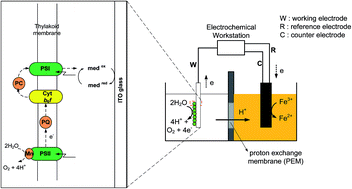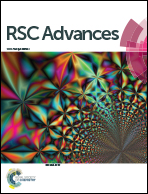Investigation of electron transfer from isolated spinach thylakoids to indium tin oxide
Abstract
The electrons generated by photosynthetic water splitting have been studied for direct electron transfer under light irradiation. Isolated thylakoids are incorporated as biocatalysts with indium tin oxide (ITO) as the electrode in a two-chamber photosynthetic electrochemical cell (PEC). The generated photocurrent is compared between deposited and dispersed thylakoids. The physical properties of deposited thylakoids are observed using field emission scanning electron microscopy (FESEM) and absorbance spectroscopy techniques. The results show the presence of thylakoids with bound photosystems including light harvesting antennas and other protein complexes. Further investigations reveal that the direction of electron transfer can be tuned by varying the applied potentials to promote bi-directional photocurrent. The maximum cathodic photocurrent is obtained at 50 mV vs. standard calomel electrode (SCE), while the maximum anodic photocurrent is enhanced with increasing positive potential applied. Our observation indicates the possibility of either reduction of O2 or H2O2 as the prominent cathodic photocurrent source, while electron transfer from thylakoids to ITO yields the anodic photocurrent.


 Please wait while we load your content...
Please wait while we load your content...